There seems to be general agreement that Democrats need to radically transform their party image. The second election of Donald Trump and the subsequent failure of the party to gain favor in voters’ eyes even as many of Trump’s actions are notably unpopular suggests that Democrats have a “yuck” factor that just isn’t going away.
Can the Democrats accomplish such a renewal of their party’s brand? On the plus side there are a number of Democratic-aligned organizations focusing on the party change imperative and promulgating useful analyses and suggestions. These include the new Searchlight Institute, the new Majority Democrats group of Democratic officeholders, the Welcome Party (whose terrific new data-driven report, “Deciding to Win,” is cited below) and the more venerable Progressive Policy Institute and Third Way. Their ideas are not without support in significant sectors of the Democratic party, including House moderates, some Senators, and some who appear to be intent on contending for the 2028 Democratic presidential nomination.
This is promising, but of course the pushback has been fierce from those in the party who believe the party’s image merely needs a few strategic tweaks to become enticing to voters. This includes a huge contingent of Democrats who are not really interested in anything that distracts from the party line that Trump-is-a-fascist-and-everything-he-does-is-wrong. And there are those who, astoundingly, believe the solution lies in the Democrats becoming even more progressive! It’s just a fact that energy in the Democratic Party seems to be coming preponderantly from these quarters, not from the reformers.
Moreover, it’s not even clear that the reformers are offering stern enough medicine to cure what ails the party or, even if they were, that sympathetic politicians would actually be willing to push for truly decisive breaks with party orthodoxy. This can be illustrated by referring to recent work that demonstrates just how steep a hill Democrats have to climb and how, therefore, half-measures will likely be inadequate.
1. The Democrats’ image isn’t as bad as you think—it’s worse! The treasure trove of data in the new “Deciding to Win” report clarifies just how bad things are. Here’s a chart on what voters think Democrats do prioritize versus what voters think they should prioritize. At the top are issues Democrats vastly underprioritize (securing the border, lowering everyday costs, lowering the rate of crime, creating jobs and economic growth); at the bottom are issues Democrats vastly overprioritize (protecting the rights of undocumented immigrants, protecting the rights of LGBT+ Americans, raising taxes to increase spending on social programs, promoting DEI). Ouch.
Further illustrating this problem, take a look at this chart of unpopular Democratic policies. Some have not had really serious support within the party but quite a few have—indeed, some have become closely associated with what it means today to be a Democrat.
This is a party that is seriously out of step with the ordinary American voter.
2. Democrats ❤️ the affluent! How can you reach the working class when your party is increasingly dependent on the votes of the affluent and naturally responsive to their priorities? That’s a tough one and Democrats aren’t anywhere close to figuring it out. Here are some charts from an excellent recent feature in the New York Times by Brody Mullins, starting with Congressional districts.
And here’s Presidential voting, from Clinton-Dole to Harris-Trump:
The party of the working class no longer! Democrats are still in denial about this trend and how difficult it will be to reverse it.
3. Just having the “D” by candidates’ names drags them down regardless of their policies. This was tested by the Center for Working-Class Politics in a recent study of Rust Belt voters.
The Democratic Party’s brand is a major liability in three of the four the Rust Belt states tested. In head-to-head tests, Democratic candidates underperformed their independent counterparts by over 8 points, even when delivering the exact same economic populist message. This “Democratic penalty” was largest among working-class, Latino, rural, and swing voters, and is more than enough to lose competitive elections across the region. The penalty was between 11 and 16 points in Michigan, Ohio, and Wisconsin.
4. Democrats are getting clobbered in rural areas—and that’s really important! Suzanne Mettler, co-author of a new book on the rural-urban divide, put it this way in an interview with Ezra Klein:
[A] party has to be able to win less populated places if it wants to have national power. F.D.R. really understood this, and contemporary politicians don’t.
It’s not the same to pick up those suburban voters. You need to be picking up rural voters. So it’s crucial to build that bridge. Because otherwise, you’re not going to win the Senate. The Electoral College is an uphill battle. And when it comes to House districts, we might think: Oh, well that’s not so much an issue.
Well, it is. Because Democratic votes are wasted, in effect, because they’re consolidated in densely populated places. Republican voters tend to be much more evenly distributed across the landscape. So it’s much easier for Republicans to draw districts that favor them than for Democrats to do so.
Exactly. Getting crushed in rural areas is not just unfortunate; it’s potentially fatal. And the Democratic brand has simply become radioactive in those areas. That’s not sustainable.
5. Population trends are making all of Democrats’ disadvantages worse. A recent study in the New York Times finds that population trends in this decade should subtract congressional seats from deep blue states and add them to deep red states. That in turn will tilt the all-important electoral college toward the Republicans, making attaining the presidency significantly more difficult for the Democrats. Here are a couple of charts from that study. First, the basic data:
Now, the potential effect on Democratic Presidential fortunes:
Read ‘em and weep.
Frankly, I don’t see how anyone could look at these data and trends and not think the Democratic forecast for party renewal remains cloudy at best. Indeed, given the resistance to serious change within the party, I would not rule out rain—and maybe even a downpour.




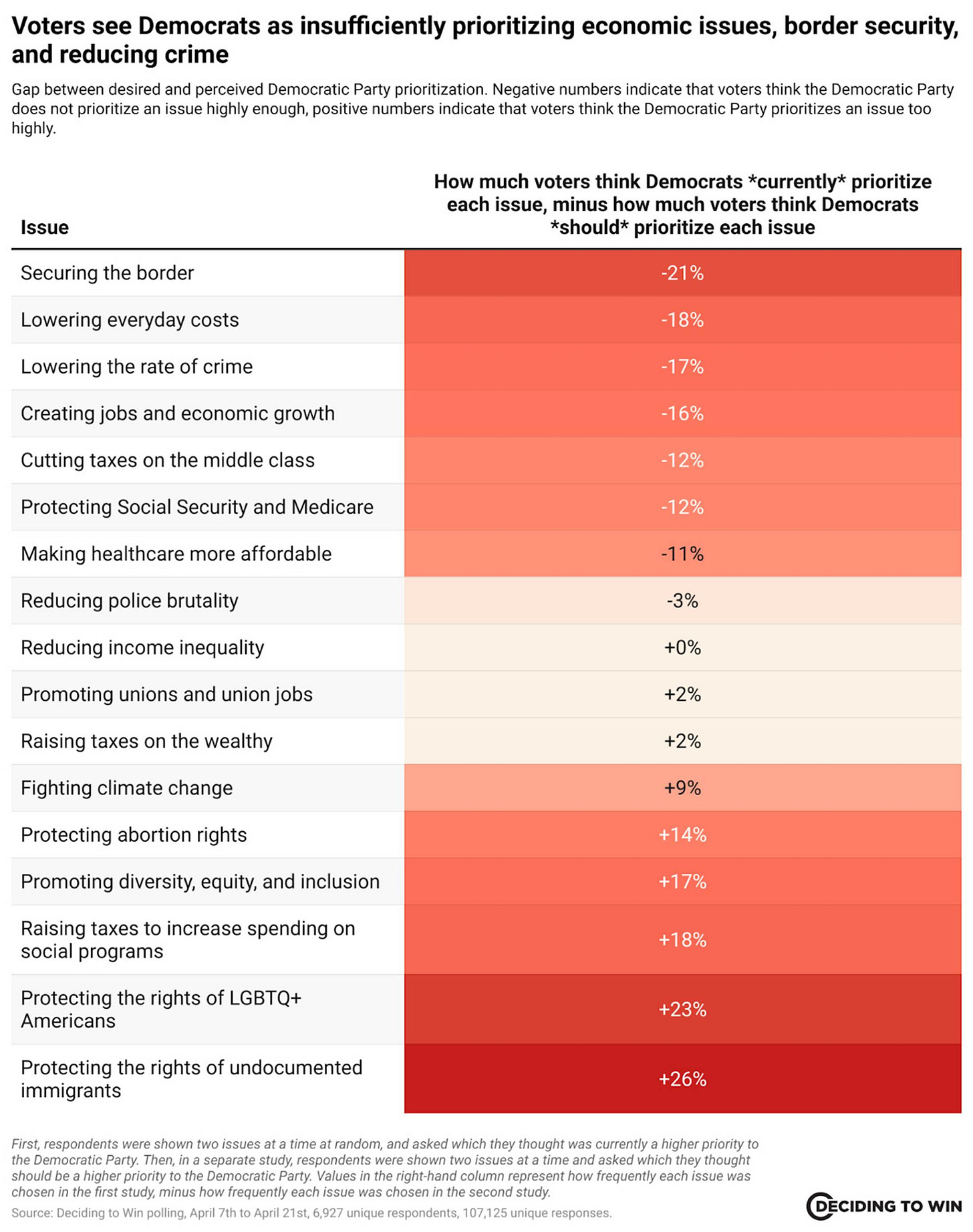
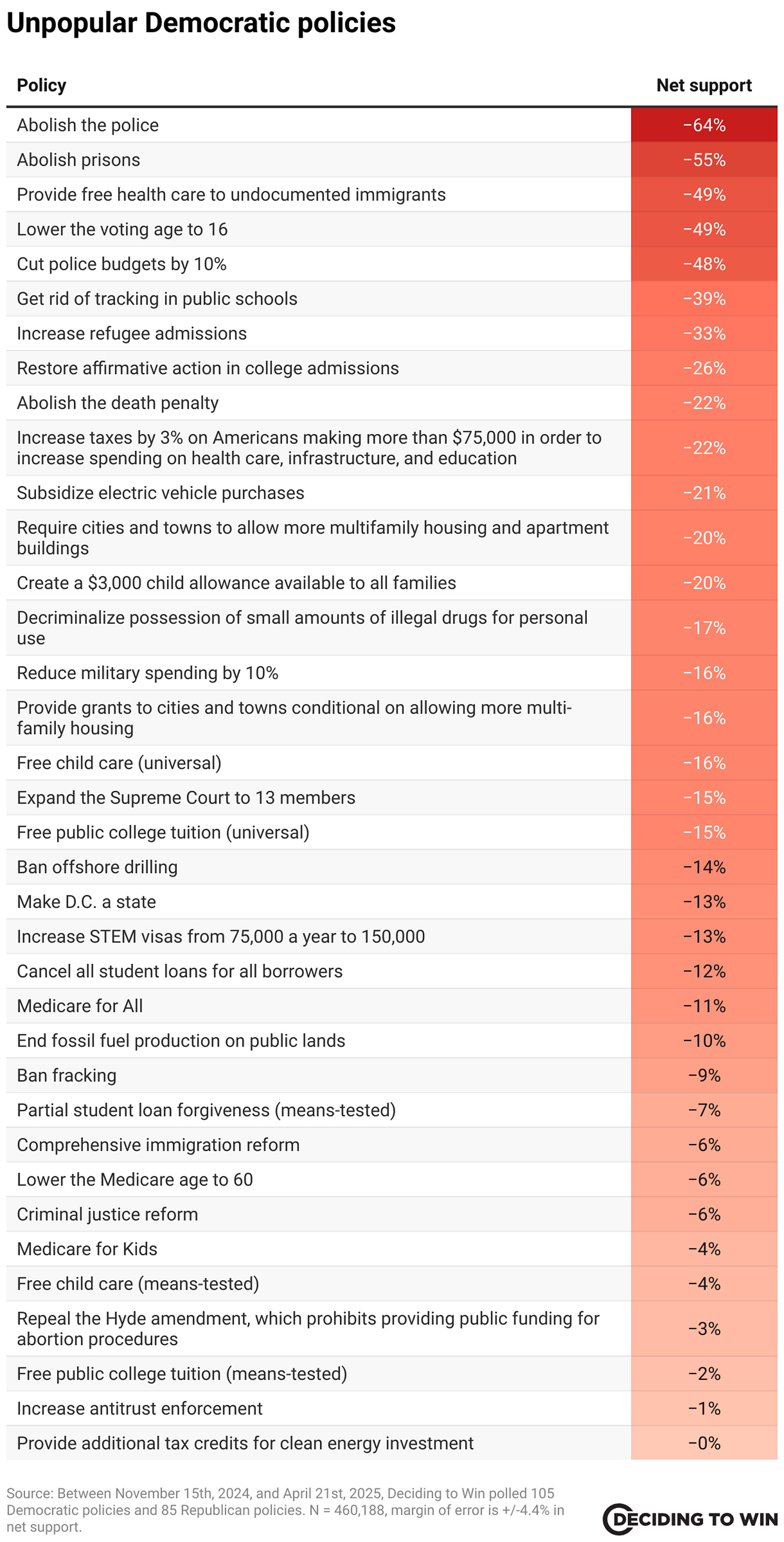
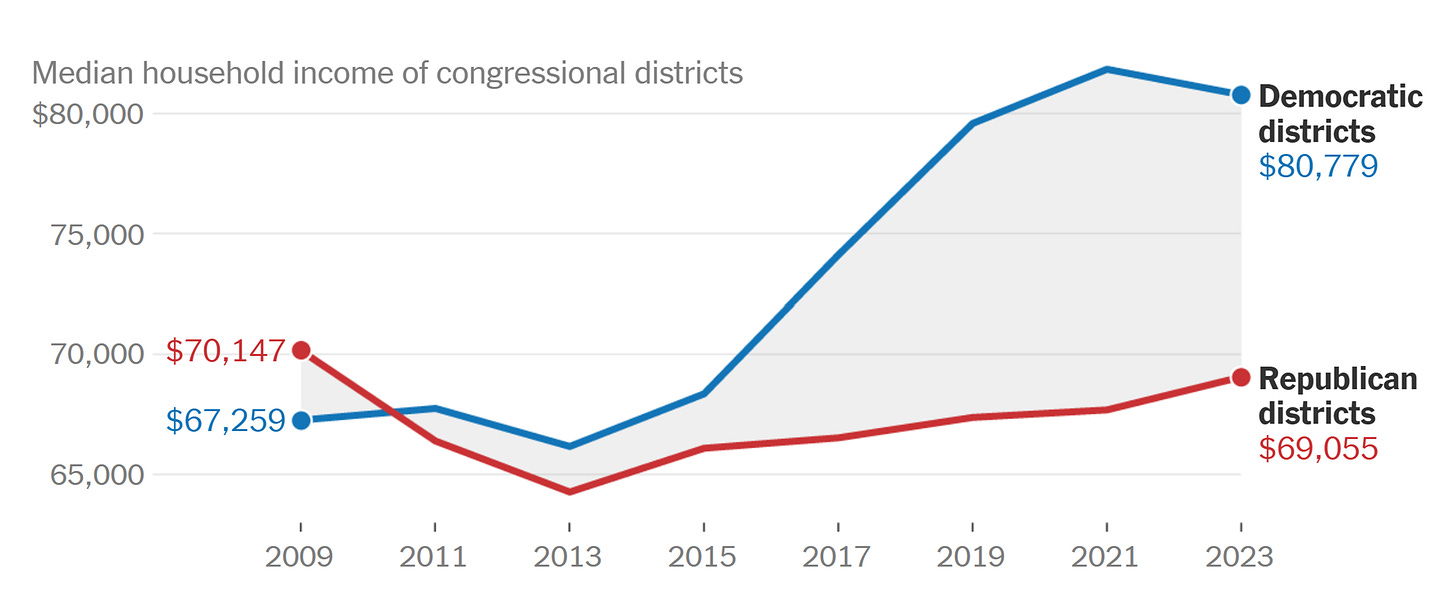
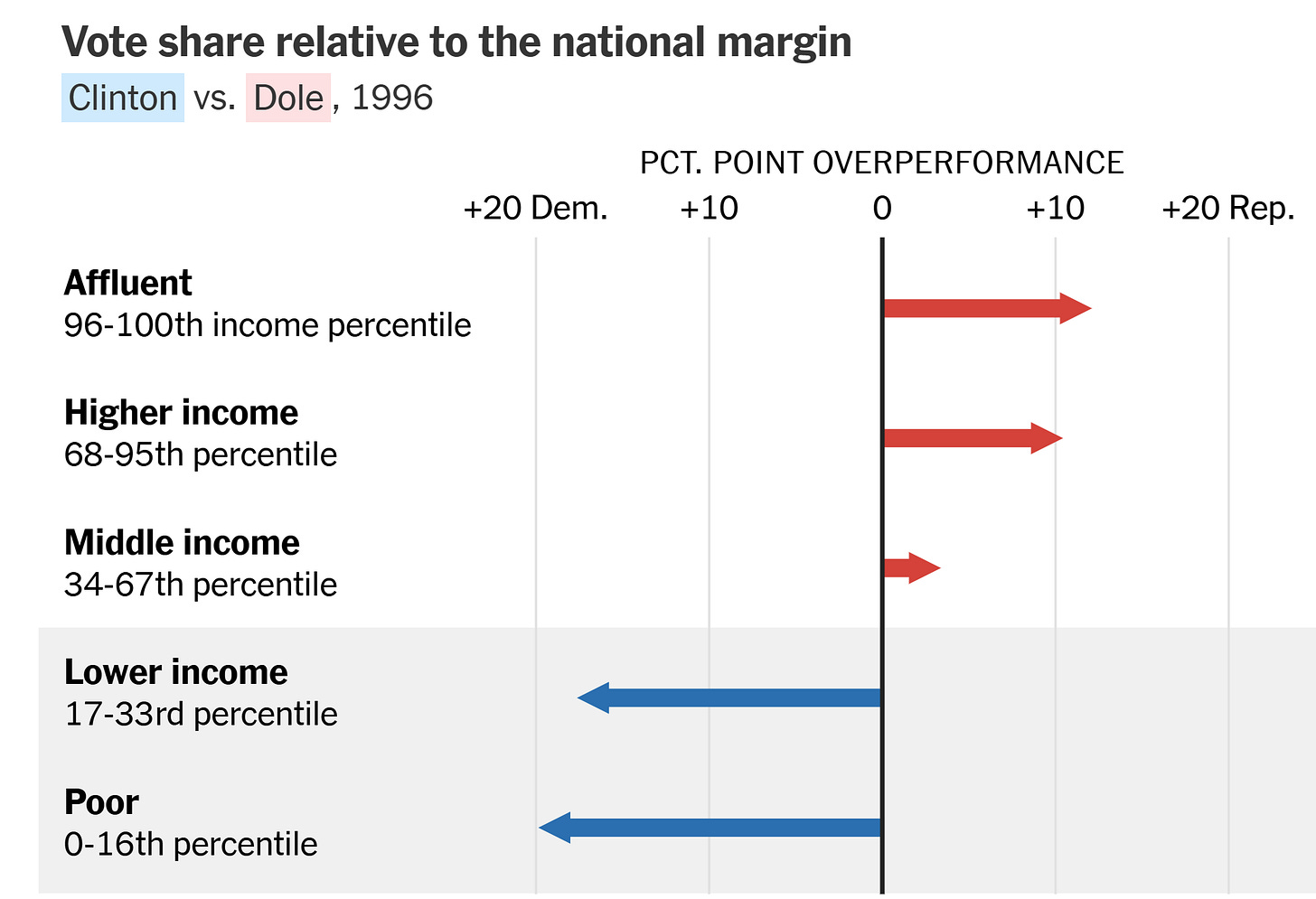
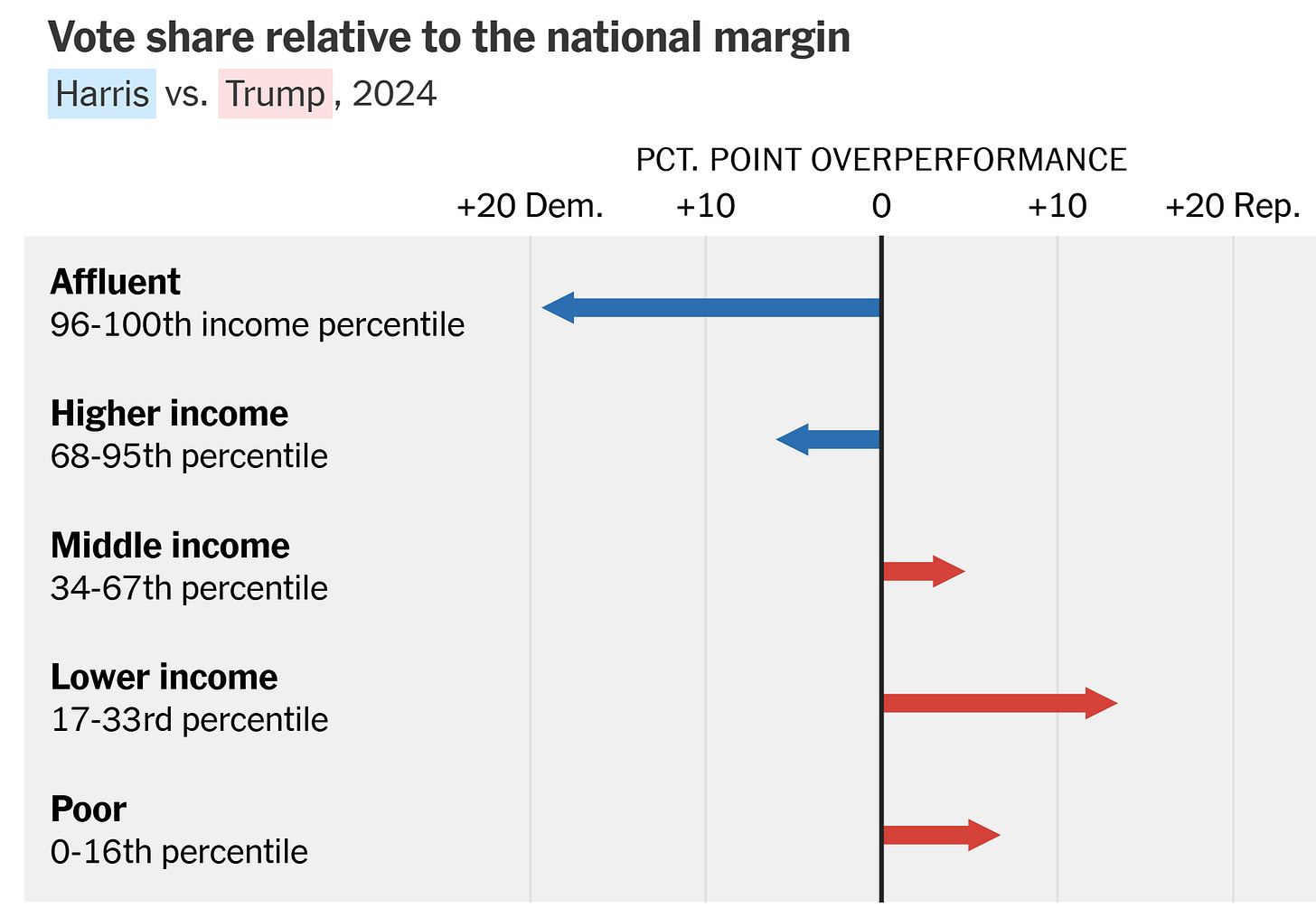

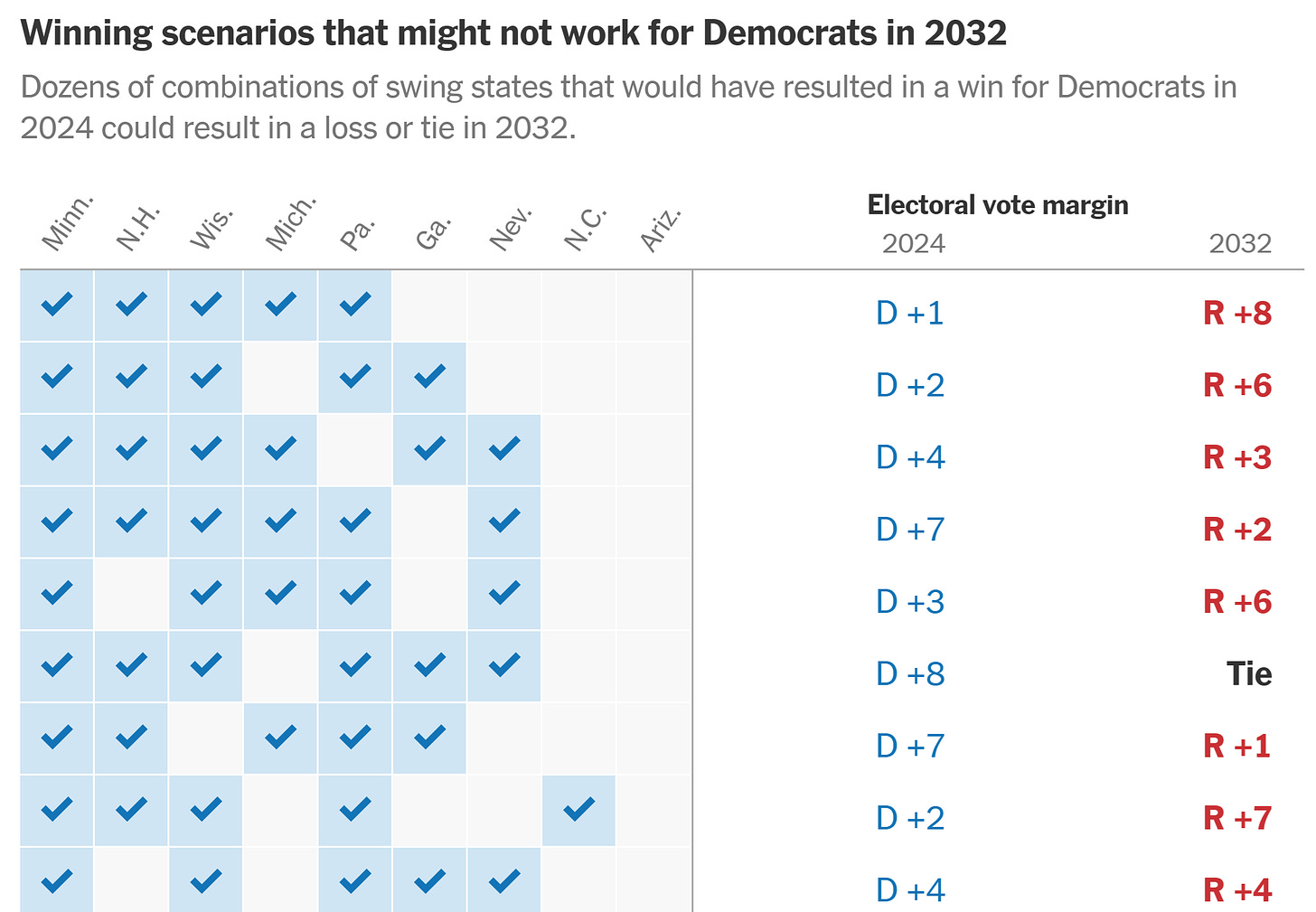
Thanks (I guess) Rui:
The problem for the Democratic Party is not Democrats. It's progressives.
Progressives have a fascinating mind-set. One dimension is that winning is not that important to them. It's nice, of course, but of more importance is the warm inner glow they get from being morally "right" and superior to others.
Another part of that mind-set is the data showing that progressives are 4 times (not a typo) more in favor of dumping a family member who disagrees with you than conservatives are. My way or the highway thinking.
Another fascinating piece is that despite MOUNDS of evidence that the public doesn't like progressive views and they are costing Democrats is that in not a single publication or comment board have we ever seen a progressive say: "Maybe I am wrong."
Finally, progressives slam white people, males, boomers, police, financially successful (not rich, but just comfortable) people all of the time. And then, oddly, expect to win people over to their side.
Progressives spend too much of their time in progressive circles. They don't get out and see the real world, and find out that many Trump voters have valid and legitimate concerns and worries. Instead, they write Trump voters off as being "low information voters."
We know a LOT of Trump voters. They are nice, good people, and good Americans. Get out of your bubble, progressives, and learn something about the world.
“Frankly, I don’t see how anyone could look at these data and trends and not think the Democratic forecast for party renewal remains cloudy at best”. Agree my only conclusion is there is little to no rational decision making going on that a normal person can see. That the Democratic leadership is following a cult like religious determination set of beliefs that will walk them off a cliff. I read an interview yesterday where the person interviewed said a lot of what is covered here and the interviewer said something like “ but how can we compromise in what we believe is moral and right”. That told me everything I needed to know